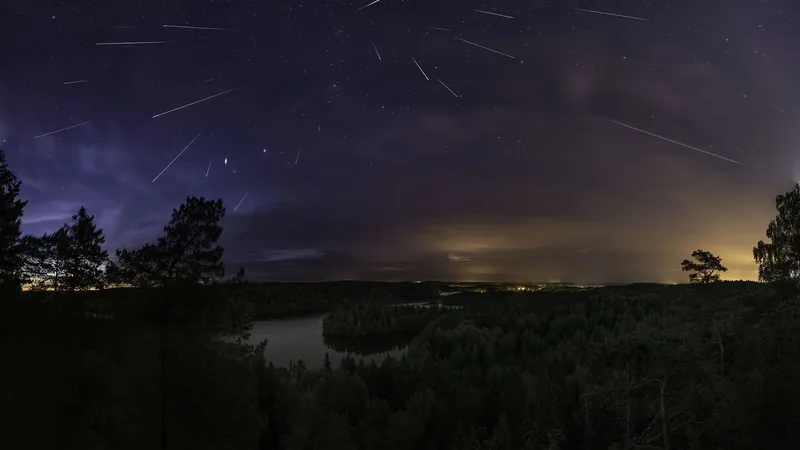
Experience the Spectacular Quadrantid Meteor Shower: The First 'Shooting Stars' of 2025 Are Arriving Tonight!
2025-01-02
Author: Charlotte
Tonight marks a celestial event that promises to dazzle stargazers as the Quadrantid meteor shower peaks, offering a rare opportunity to witness bright fireballs and shooting stars streaking across the sky. Prepare for a night filled with wonder as the first major meteor shower of 2025 lights up the darkness!
Running from December 26, 2024, to January 16, 2025, the Quadrantid meteor shower is often overshadowed due to its occurrence during the cold and frequently cloudy winter months in the Northern Hemisphere. According to the American Meteor Society, if the skies are clear, observers can expect to see around 25 meteors per hour. Among these, some of the meteors will be extraordinarily bright, creating fireballs that could illuminate the night sky for a moment.
The meteor shower will peak overnight from Thursday, January 2, to Friday, January 3, 2025, with the zenith of activity anticipated at 12:45 p.m. EST on January 3. For the best viewing experience, look to the sky just a few hours before dawn on January 3. If you're located further west, you'll likely enjoy an even more impressive display!
Why Are the Quadrantids Special?
The Quadrantids originate from the asteroid 2003 EH1, which makes an orbit around the sun every 5.5 years. As Earth travels through the remnants of dust and debris left behind by this asteroid from late December to mid-January, the densest part of the debris stream will coincide with the meteor shower's peak between January 3 and 4.
Ideal Viewing Conditions
Astronomical conditions are particularly favorable this year: a crescent moon will set shortly after sunset on January 2, allowing the night sky to darken significantly. To fully enjoy the meteor shower, it's crucial to find a location far away from light pollution, although the chilly weather might pose some challenges in achieving this.
The Quadrantids are best viewed from the Northern Hemisphere, where their source lies in the remnants of the inactive constellation Quadrans Muralis. This constellation, while no longer officially recognized, used to represent a quarter-circular device for star measurement. It can be found adjacent to Ursa Major, also known as the home of the famous Big Dipper.
What to Do Next
As if witnessing such natural wonders isn't enough, the excitement doesn't end here! After the Quadrantids, the next major meteor showers to look forward to will be the Lyrids in April and the Eta Aquariids in May. So grab your warm blankets, prepare some hot cocoa, and get ready to immerse yourself in the magic of the night sky. Don't miss out on this chance to catch the breathtaking first meteor shower of 2025—mark your calendar and keep your eyes peeled!



 Brasil (PT)
Brasil (PT)
 Canada (EN)
Canada (EN)
 Chile (ES)
Chile (ES)
 Česko (CS)
Česko (CS)
 대한민국 (KO)
대한민국 (KO)
 España (ES)
España (ES)
 France (FR)
France (FR)
 Hong Kong (EN)
Hong Kong (EN)
 Italia (IT)
Italia (IT)
 日本 (JA)
日本 (JA)
 Magyarország (HU)
Magyarország (HU)
 Norge (NO)
Norge (NO)
 Polska (PL)
Polska (PL)
 Schweiz (DE)
Schweiz (DE)
 Singapore (EN)
Singapore (EN)
 Sverige (SV)
Sverige (SV)
 Suomi (FI)
Suomi (FI)
 Türkiye (TR)
Türkiye (TR)
 الإمارات العربية المتحدة (AR)
الإمارات العربية المتحدة (AR)